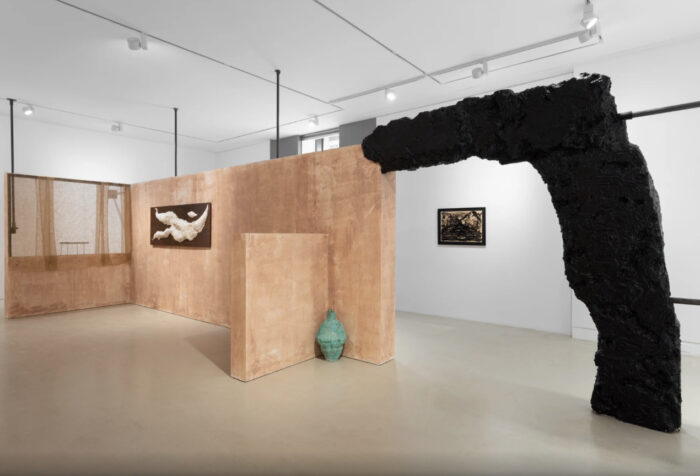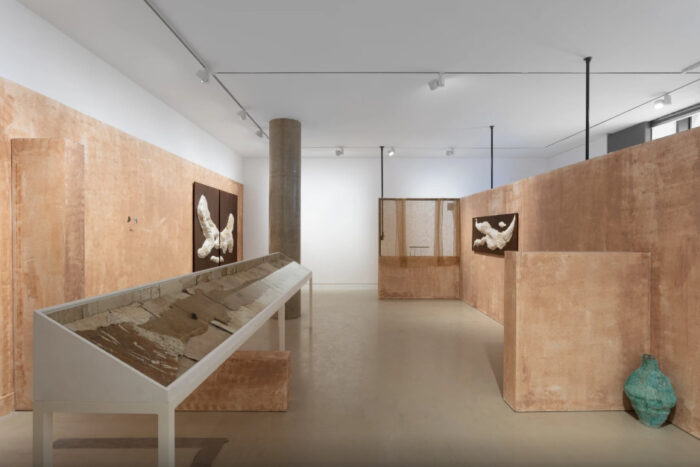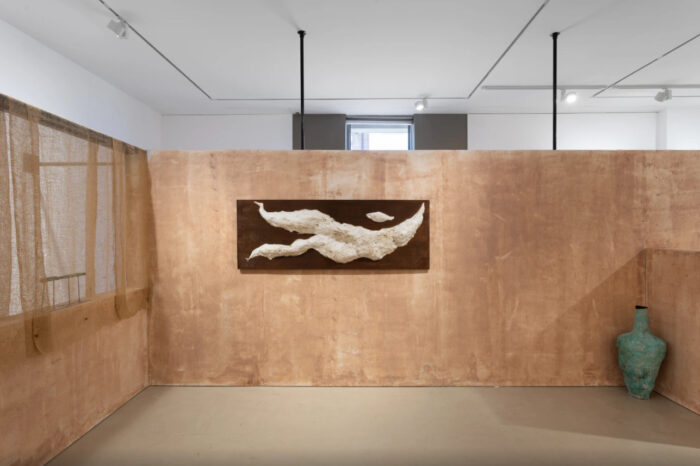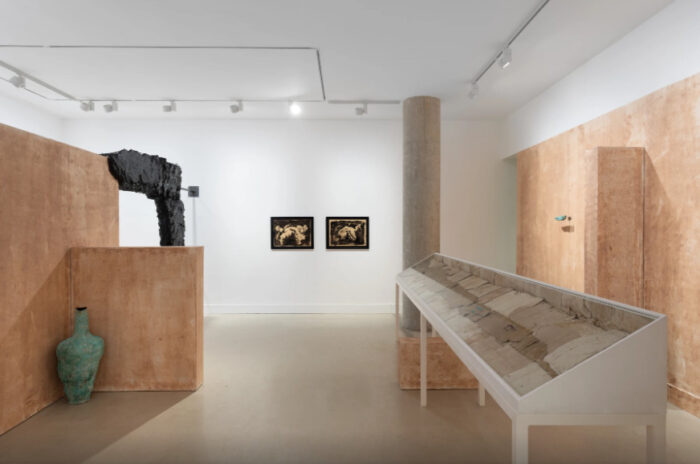
Alrai’s debut exhibition with the gallery is a compelling exploration of material histories, where the artist delves into the significance of archaeological remnants and museum displays. Utilizing a palette of materials that evoke the grandeur of the 1st century AD—gold, pewter, silver, copper, and clay—Alrai recreates the opulence of palace-like boats that once graced Lake Nemi. Her new series of bitumen drawings capture the essence of the ancient landscapes, with the medium itself being a nod to the organic substances found in the lake’s depths. The bitumen gestures speak to an act of unearthing, uncovering the past in a manner that is both reverent and interpretive. The sculptures that accompany these drawings, with their scarred surfaces and clay-like textures, further immerse the viewer in a landscape that is both ancient and reimagined.


Alrai’s installation within the gallery space cleverly critiques the Western museological tradition by adopting its forms and turning them on their head. The artist’s use of vitrines and partition walls to structure the space draws attention to how museums dictate not only the movement of bodies but also the narratives that visitors consume. By playing with scale and material, Alrai subverts the expectations of what is considered valuable—unfired terracotta pots are magnified to an imposing size, and delicate gold scythes are reduced to miniatures. The artist’s deliberate choice of polystyrene, described as ‘deathless,’ in creating these towering forms adds a layer of irony, challenging the notions of permanence and worth. The wall panels, reminiscent of Roman stucco, further this critique, as their plywood bases mimic expensive wood, questioning the authenticity and value ascribed to historical artifacts.

“A Lake as Great as Its Bones” is a poetic and contemplative exhibition that invites viewers to question the reliability of historical narratives and the way we engage with the past. Alrai’s work evokes a sense of nostalgia while simultaneously destabilizing the reverence often associated with ancient artifacts. By positioning herself as an unreliable narrator, she creates a space where the boundaries between truth and fiction blur, leaving us to ponder the fragile relationship between identity, memory, and history. The exhibition is a testament to Alrai’s ability to weave complex themes into her work, offering a rich, multi-layered experience that lingers long after the viewer has left the gallery.

